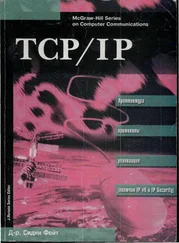Once the analyst moves from the hunting phase to the gathering phase, they can use Prism to look at the targets' accounts at Facebook, Google and Microsoft, while Xkeyscore will let them see what websites they visit. Traffic data analysis gives still more: despite the growing use of encryption, the communications to and from a home reveal what app or device is used when and for how long 6. The agencies are pushing for access to end-to-end messaging systems such as WhatsApp; in countries like the UK, Australia and China, legislators have already authorised this, though it's not at all clear which US companies might comply (I'll discuss policy in Chapter 26).
Given a high-value target, there's a big bag of tools the analyst can install on their laptop or cellphone directly. They can locate it physically, turn it into a room bug and even use it as a remote camera. They can download the target's address book and contact history and feed that into Xkeyscore to search recursively for their direct and indirect contacts. Meanwhile the analyst can bug messaging apps, beating the end-to-end encryption by collecting the call contents once they've been decrypted. They can set up an alarm to notify them whenever the target sends or receives messages of interest, or changes location. The coverage is pretty complete. And when it's time for the kill, the target's phone can be used to guide a bomb or a missile. Little wonder Ed Snowden insisted that journalists interviewing him put their phones in the fridge!
Finally, the analyst has also a proxy through which they can access the Internet surreptitiously – typically a machine on a botnet. It might even be the PC in your home office.
2.2.1.11 Offensive operations
The Director NSA also heads the US Cyber Command, which since 2009 has been one of ten unified commands of the United States Department of Defense. It is responsible for offensive cyber operations, of which the one that made a real difference was Stuxnet. This was a worm designed to damage Iran's uranium enrichment centrifuges by speeding them up and slowing them down in patterns designed to cause mechanical damage, and was developed jointly by the USA and Israel [326, 827]. It was technically sophisticated, using four zero-day exploits and two stolen code-signing certificates to spread promiscuously through Windows PCs, until it found Siemens programmable logic controllers of the type used at Iran's Natanz enrichment plant – where it would then install a rootkit that would issue the destructive commands, while the PC assured the operators that everything was fine. It was apparently introduced using USB drives to bridge the air gap to the Iranian systems, and came to light in 2010 after copies had somehow spread to central Asia and Indonesia. Two other varieties of malware (Flame and Duqu) were then discovered using similar tricks and common code, performing surveillance at a number of companies in the Middle East and South Asia; more recent code-analysis tools have traced a lineage of malware that goes back to 2002 (Flowershop) and continued to operate until 2016 (with the Equation Group tools) [2071].
Stuxnet acted as a wake-up call for other governments, which rushed to acquire ‘cyber-weapons’ and develop offensive cyber doctrine – a set of principles for what cyber warriors might do, developed with some thought given to rationale, strategy, tactics and legality. Oh, and the price of zero-day vulnerabilities rose sharply.
Computer scientists know the importance of how algorithms scale, and exactly the same holds for attacks. Tapping a single mobile phone is hard. You have to drive around behind the suspect with radio and cryptanalysis gear in your car, risk being spotted, and hope that you manage to catch the suspect's signal as they roam from one cell to another. Or you can drive behind them with a false base station 7and hope their phone will roam to it as the signal is louder than the genuine one; but then you risk electronic detection too. Both are highly skilled work and low-yield: you lose the signal maybe a quarter of the time. So if you want to wiretap someone in central Paris often enough, why not just wiretap everyone? Put antennas on your embassy roof, collect it all, write the decrypted calls and text messages into a database, and reconstruct the sessions electronically. If you want to hack everyone in France, hack the telco, perhaps by subverting the equipment it uses. At each stage the capital cost goes up but the marginal cost of each tap goes down. The Five Eyes strategy is essentially to collect everything in the world; it might cost billions to establish and maintain the infrastructure, but once it's there you have everything.
The same applies to offensive cyber operations, which are rather like sabotage. In wartime, you can send commandos to blow up an enemy radar station; but if you do it more than once or twice, your lads will start to run into a lot of sentries. So we scale kinetic attacks differently: by building hundreds of bomber aircraft, or artillery pieces, or (nowadays) thousands of drones. So how do you scale a cyber attack to take down not just one power station, but the opponent's whole power grid? The Five Eyes approach is this. Just as Google keeps a copy of the Internet on a few thousand servers, with all the content and links indexed, US Cyber Command keeps a copy of the Internet that indexes what version of software all the machines in the world are using – the Mugshot system mentioned above – so a Five Eyes cyber warrior can instantly see which targets can be taken over by which exploits.
A key question for competitor states, therefore, is not just to what extent they can create some electronic spaces that are generally off-limits to the Five Eyes. It's the extent to which they can scale up their own intelligence and offensive capabilities rather than having to rely on America. The number of scans and probes that we see online indicates that the NSA are not alone in trying to build cyber weapons that scale. Not all of them might be nation states; some might simply be arms vendors or mercenaries. This raises a host of policy problems to which we'll return in Part 3. For now we'll continue to look at capabilities.
China is now the leading competitor to the USA, being second not just in terms of GDP but as a technology powerhouse. The Chinese lack the NSA's network of alliances and access to global infrastructure (although they're working hard at that). Within China itself, however, they demand unrestricted access to local data. Some US service firms used to operate there, but trouble followed. After Yahoo's systems were used to trap the dissident Wang Xiaoning in 2002, Alibaba took over Yahoo's China operation in 2005; but there was still a row when Wang's wife sued Yahoo in US courts in 2007, and showed that Yahoo had misled Congress over the matter [1764]. In 2008, it emerged that the version of Skype available in China had been modified so that messages were scanned for sensitive keywords and, if they were found, the user's texts were uploaded to a server in China [1963]. In December 2009, Google discovered a Chinese attack on its corporate infrastructure, which became known as Operation Aurora; Chinese agents had hacked into the Google systems used to do wiretaps for the FBI (see Prism above) in order to discover which of their own agents in the USA were under surveillance. Google had already suffered criticism for operating a censored version of their search engine for Chinese users, and a few months later, they pulled out of China. By this time, Facebook, Twitter and YouTube had already been blocked. A Chinese strategy was emerging of total domestic control, augmented by ever-more aggressive collection overseas.
Читать дальше











